


| Video ID |
Fujita Scale rating |
Location |
Date |
Comments |
| 54a |
F3 |
Grand Isle NE |
Mar. 13, 1990 |
tornado cloud is pretty thick and vertical |
| 61f |
F3 |
McConnell
AFB
KS |
Apr. 26, 1991 |
this is about as close
to a tornado as you're ever likely to get. Try to
judge the diameter of the tornado cloud. What
direction are the tornado winds spinning? |
| 52 |
F5 |
Hesston
KS |
Mar. 13, 1990 |
Watch closely, you may
see a tree or two uprooted by the tornado winds |
| 51 |
F3 |
North
Platte NE |
Jun. 25, 1989 |
Trees uprooted and
buildings lifted by the tornado winds. The online
video is longer than the one shown in class and has some
good closeup video. See especially the last couple
of minutes of the video |
| 65 |
F1 |
Brainard
MN |
Jul. 5, 1991 |
It's a good thing this
was only an F1 tornado |
| 57 |
F2 |
Darlington
IN |
Jun. 1, 1990 |
Tornado cloud without
much dust |
| 62b |
F2 |
Kansas
Turnpike |
Apr. 26, 1991 |
It's sometimes hard to
run away from a tornado. Watch closely you'll see a
van blown off the road and rolled by the tornado.
The driver of the van was killed! |
| 47 |
F2 |
Minneapolis, MN |
Jul. 18, 1986 |
Tornado cloud appears
and disappears. The online video compares features
seen in this tornado with one created in a laboratory. |





| Damage
Indicator |
Description |
| 2 |
1 or 2 family
residential home |
| 3 |
Mobile home (single
wide) |
| 10 |
Strip mall |
| 13 |
Automobile showroom |
| 22 |
Service station canopy |
| 26 |
Free standing light pole |
| 27 |
Tree (softwood) |
| degree
of damage |
description |
approximate wind speed (MPH) |
| 1 |
visible damage |
65 |
| 2 |
loss of roof covering
material |
80 |
| 3 |
broken glass in doors
& windows |
95 |
| 4 |
lifting of roof deck,
loss of more than 20% of roof material, collapse of
chimney, garage doors collapse inward, destruction of
porch roof or carport |
100 |
| 5 |
house slides off
foundation |
120 |
| 6 |
large sections of roof
removed, most walls still standing |
120 |
| 7 |
exterior walls collapse
(top story) |
130 |
| 8 |
most interior walls
collapse (top story) |
150 |
| 9 |
most walls in bottom
floor collapse except small interior rooms |
150 |
| 10 |
total destruction of
entire building |
170 |
| EF2
Damage roof is gone, but all walls still standing |
EF4
Damage only the strong reinforced concrete basement walls (part of the wall was below ground) are left standing. It doesn't look like there would have been anywhere in this building that would have provided protection from a tornado this strong. |
EF5
Damage complete destruction of the structure |
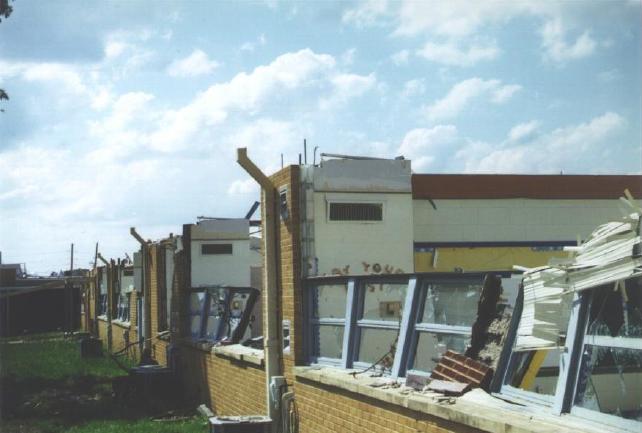 |
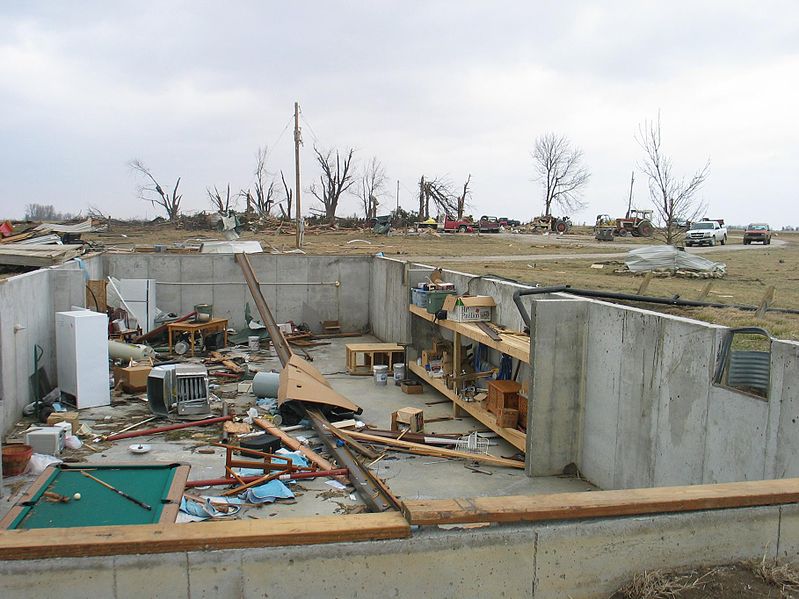 |
 |
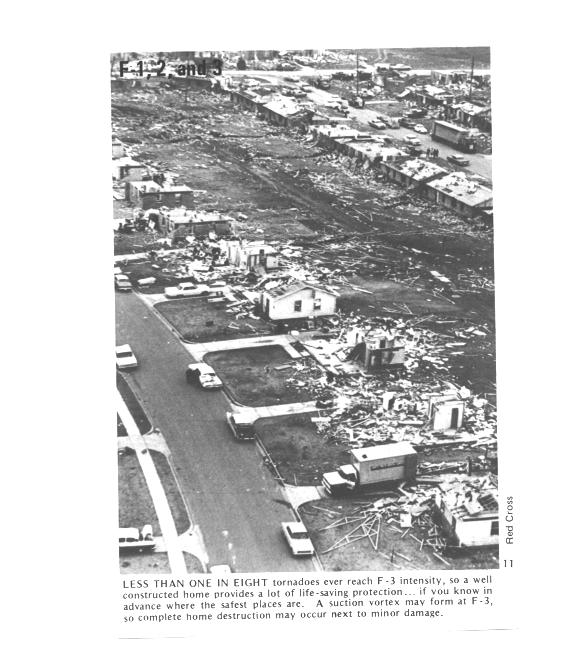 |
|
| One of the better examples that I've
seen of very different levels of damage in close
proximity. This is damage from an EF4 tornado that
hit Northwood ND on Aug. 26, 2007. (National Weather
Service photo, source
click on the Track Segments and Photos link) |

|
 |
| Sketch of multiple vortices in a large
tornado and the damage pattern they could leave on the
ground |
An actual aerial survey of tornado
damage. This was an EF 4 tornado that hit Washington
Illinois on Nov. 17, 2013 (here is YouTube
video of the tornado and the damage left
behind). Photo by Zbigniew Bzdak for the Chicago
Tribune (source) |

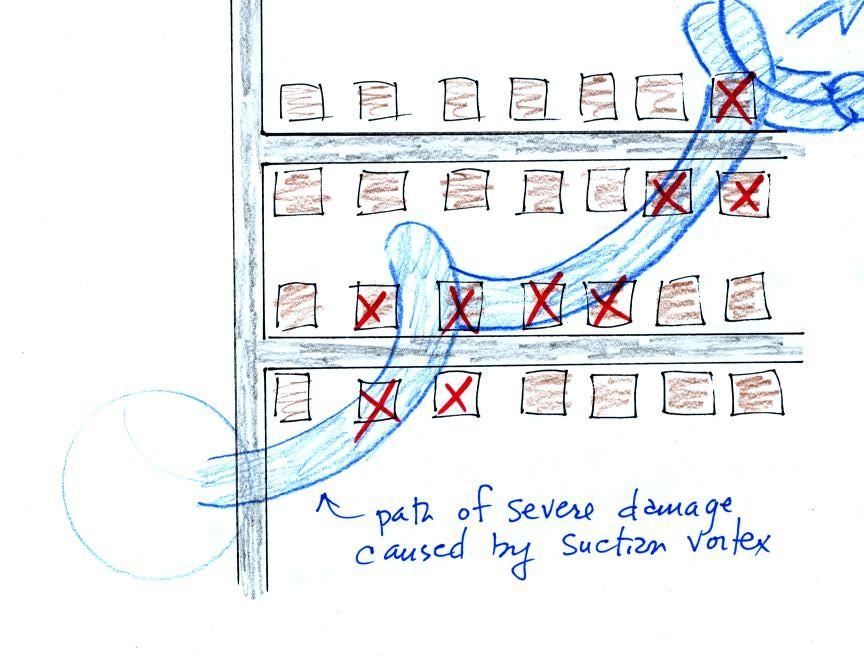


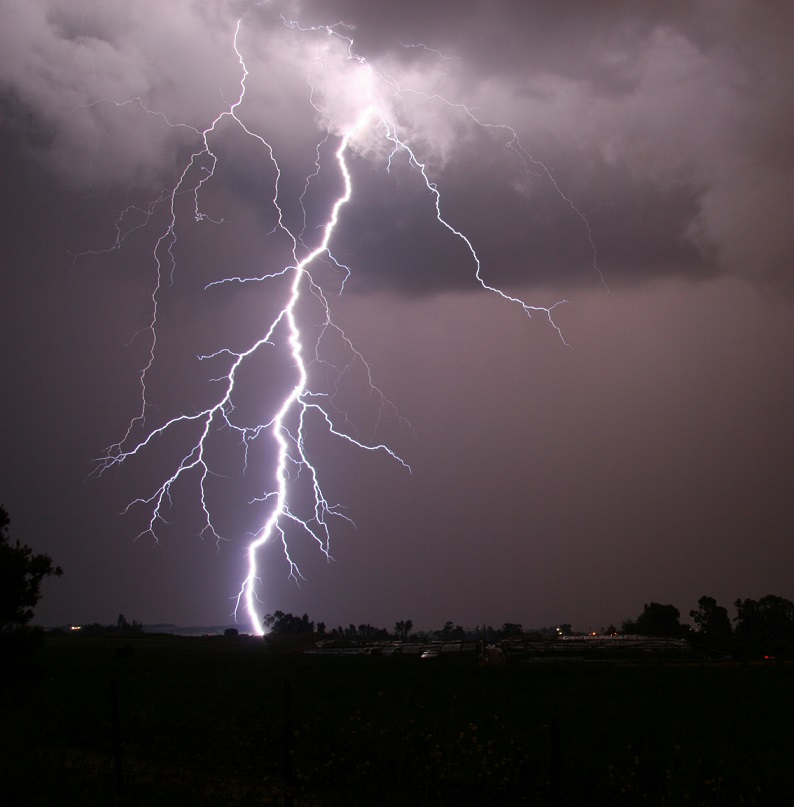 |
 |
| Cloud to ground lightning with downward
branching (source
of this photo) |
An upward lightning discharge initiated
by the Eiffel Tower in Paris. At the top
of the photograph you can see that the branching
points upward. Photographed by Hakim Atek, source
of this photo |
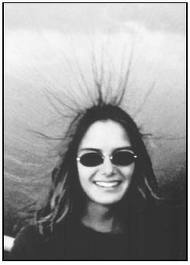 |
 |
| Michael McQuilken is
shown at far right next to his brother Sean. Their
sister Mary is shown in the left photo. All three were
on top of Moro
Rock in Sequoia National Park in California.
Sean was struck by lightning but survived. Another man
in the area was struck and killed by lightning. An
elevated exposed location like this is a very dangerous
place to be during a thunderstorm. |
|